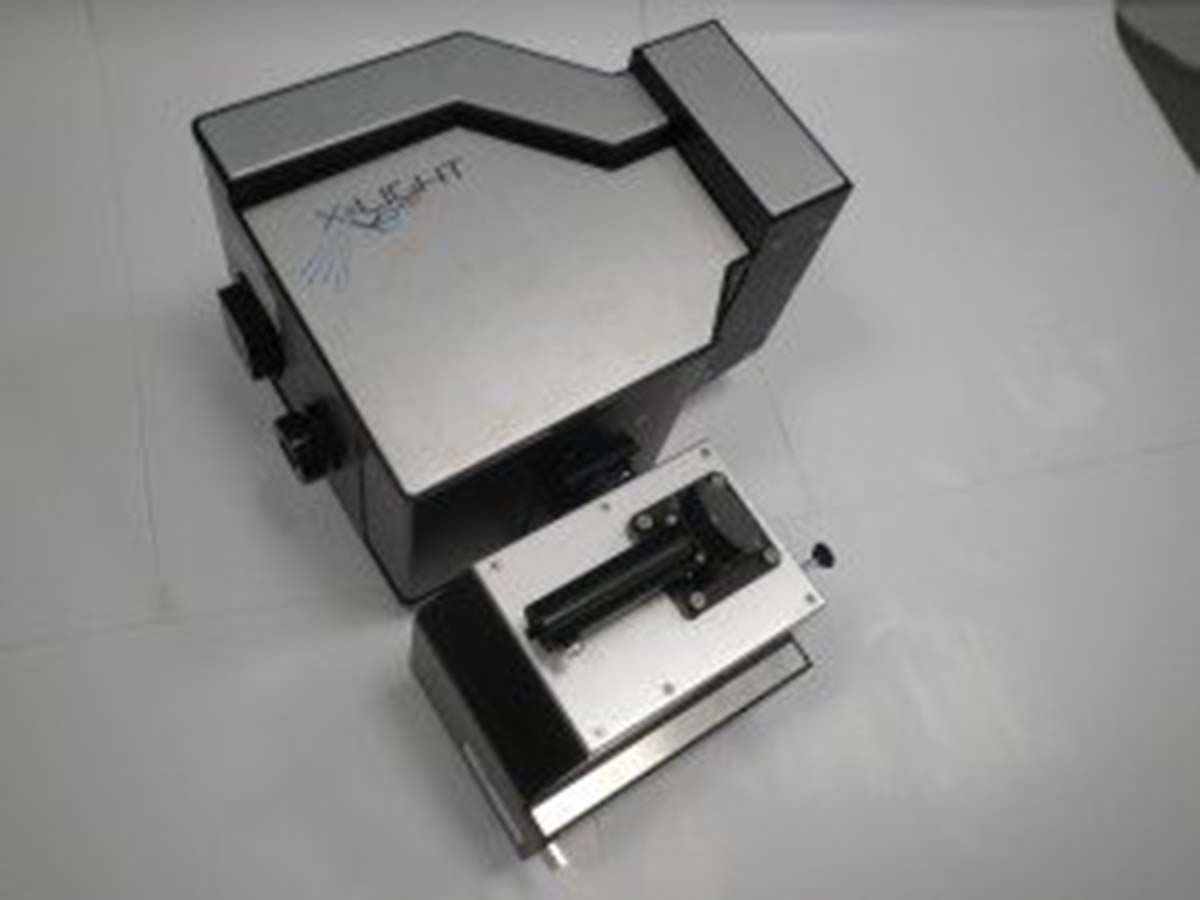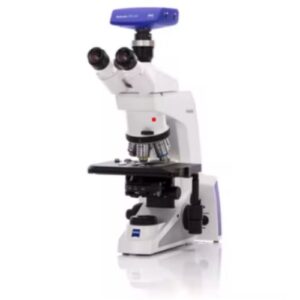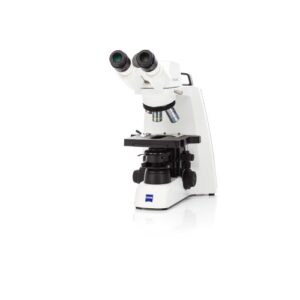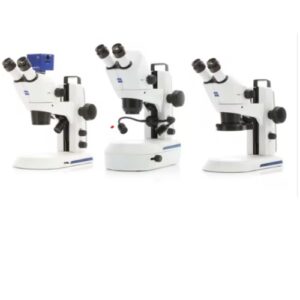Since the first spinning disk confocal head was released over twenty years ago, there has been a flood of new and different products. Each product has its merits, such as exceptional light transmission, enhanced resolution, flatness of field, speed, and/or versatility to accommodate multiple techniques (FRAP, for instance).
Yokogawa established itself as the gold standard for spinning disk confocal in large part due to its brightness and image quality. The spinning disks themselves have a unique strategy for enhancing laser light to the sample while still providing confocality for the emission light – a dual disk design with microlenses on the excitation disk. The microlenses are used to increase laser light to the sample, but they are not utilized in the emission light path. This strategy ensures that the excitation light is bright, but the emission light passes through a clean pinhole. With an optimized Nipkow disk pinhole pattern, pinhole size, and microlenses, the CSU-X1 is the gold standard for spinning disk confocal applications when imaging with the 100X lens. The system requires a sensitive EMCCD camera, but no computer processing is required to generate a stunning image – at up to 2000FPS with a 10,000 RPM disk motor.
With increasing laser power from laser manufacturers such as Coherent and increasing computing power to leverage super resolution confocal imaging, several manufacturers have started developing, and bringing to market, confocals that could supplant the Yokogawa CSU series as the de facto gold standard for spinning disk confocal imaging.
One system in particular was developed by an upstart company called CrestOptics. With a small team of scientists and engineers the X-Light burst onto the scene in 2012. Their latest generation called the X-Light V2 spinning disk confocal comes with an improved light path and an optional upgrade to high speed structured illumination. With options like these, the CrestOptics X-Light V2 has the potential to unseat the Yokogawa as the go-to spinning disk confocal system for biologists.
The design of the CrestOptics X-Light V2 is unique, it does not use the expensive microlenses and dual disk strategy implemented in the Yokogawa CSU-X1 or CSU-W1. Instead the X-Light V2 uses a simple and less expensive single disk with a proprietary pinhole pattern and superior 15,000 RPM motor. It has the option for a manual emission filter wheel to reduce cost and can work with one of the many multi-channel LED light sources when lasers prove to be too expensive.
I recently had the opportunity to talk with Andrea Latini, Ph.D., President of CrestOptics , about the X-Light V2 and its improvements over the previous generation.
Q: Brightness has always been an advantage for Yokogawa spinning disk confocal units, how does the CrestOptics system address this traditional Yokogawa advantage?
A: The ‘brightness’ could be defined as overall Confocal System throughput in terms of collection efficiency for sample fluorescence. With our X-Light Confocals (V1 & V2), we’ve been extensively working on both excitation efficiency end fluorescence collection efficiency optimizations.
We decided not to use microlenses in our approach since, due to the microlenses diameter limitation, it is not possible to accommodate an optimum number of pinholes per unit area onto the spinning disk surface. A second reason for eliminating microlenses is that they cannot improve collection efficiency. Fluorescence from the sample, or emission light, doesn’t pass through microlenses – only excitation light. Furthermore, microlenses f/# (f-number) doesn’t match well with the numerical aperture of all microscope objectives. Nor does it match the tube lenses focal lengths of different microscope brands.
Main optimization on our proprietary spinning disk spiral pattern is both on pinholes diameter (available with 70um, 60um, 50um, and 40um diameter), on total number of spirals on the disk and spiral geometrical parameters.
Final results allow for both higher throughput through the disk (excitation + fluorescence photons), and excellent confocality through z-planes with the largest choice of off-the-shelf microscope objectives magnification and microscope tube lenses.
Q: Have you compared a Yokogawa spinning disk confocal in brightness and image quality to a CrestOptics X-Light V2 unit? How did the two stack up?
A: Nikon Amsterdam & Switzerland Test Labs (Dr. Fabian Anderegg, Dr. Daniel Ciepielewski and Dr. Herman Fennema), conducted a complete quantitative comparison among CrestOptics X-Light V1&V2 systems and other confocal systems (Visitech & Yokogawa), following a well-known official methodology for Overall Brightness Measurement and Confocality performances (details are available).
When comparing Yokogawa CSU, Visitek, and CrestOptics, the PSF performance is the same on all three. In addition, the throughput confocal performance ratio (CF/WF %), taking into account both excitation and collection efficiency, results are as follows:
- Visitech 1% efficiency
- Yoko CSU (> W1 due to W1 lower pinholes density) 2.8% efficiency
- CrestOptics X-Light 5.5%-6.3% efficiency
Note: using 200nm beads, 100X 1.49 NA objective and Lumencor SpectraX LED system (not even lasers), Evolve EMCCD. Visitech and Yokogawa tests have been carried out with laser sources
The X-Light performs significantly better the two other confocal brands.
Q: The CrestOptics X-Light V1 was revolutionary for its ability to accommodate large format sensors such as the 1K EMCCD cameras and sCMOS, what changes does the second version have in store?
A: X-Light V2 is mainly a refinement to the V1 version to get top performance for image quality with no aberration on large format sensors. Additionally, The V2 adds the capability to hot-swap the spinning disk box with no alignment needed for maximum pinhole pattern flexibility on the same confocal system. End users could purchase more than one disk box at any time.
Q: The first generation of the CrestOptics X-Light was able to combine spinning disk confocal with FRAP in a single unit, will FRAP support be continued?
A: the X-Light V2 is not intended to be a V1 replacement. The optical solutions adopted to the V2 do not allow for a FRAP system to be combined with it. The V1 will continue to be the only system capable of doing it.
The V2 has been mechanically and optically engineered to perfectly match with the new VCS SuperResolution Add-On to get a confocal + super resolved system at once.
Q: High speed Structured Illumination Microscopy has been around for years, what does the CrestOptics system bring to the table that other manufacturers do not?
A: the CrestOptics VCS Super Resolution module allows for nearly 100nm lateral resolution (XY – 115nm measured), with only 1s-3s needed to get the super resolved acquisition (depending on CCD-sCMOS Region of Interest size – a 1920×1080 image requires 5s acquisition-deconvolution time; smaller ROI require faster acquisition time).
This has been possible by combining a full CUDA proprietary DLL that makes use of NVidia graphic card computational power to get to the fastest super resolution algorithms application on the structured illumination acquisitions (normally 36 frames per one super resolved image).
We do offer several deconvolution algorithms which are all proprietary (documentation and literatures are available).




